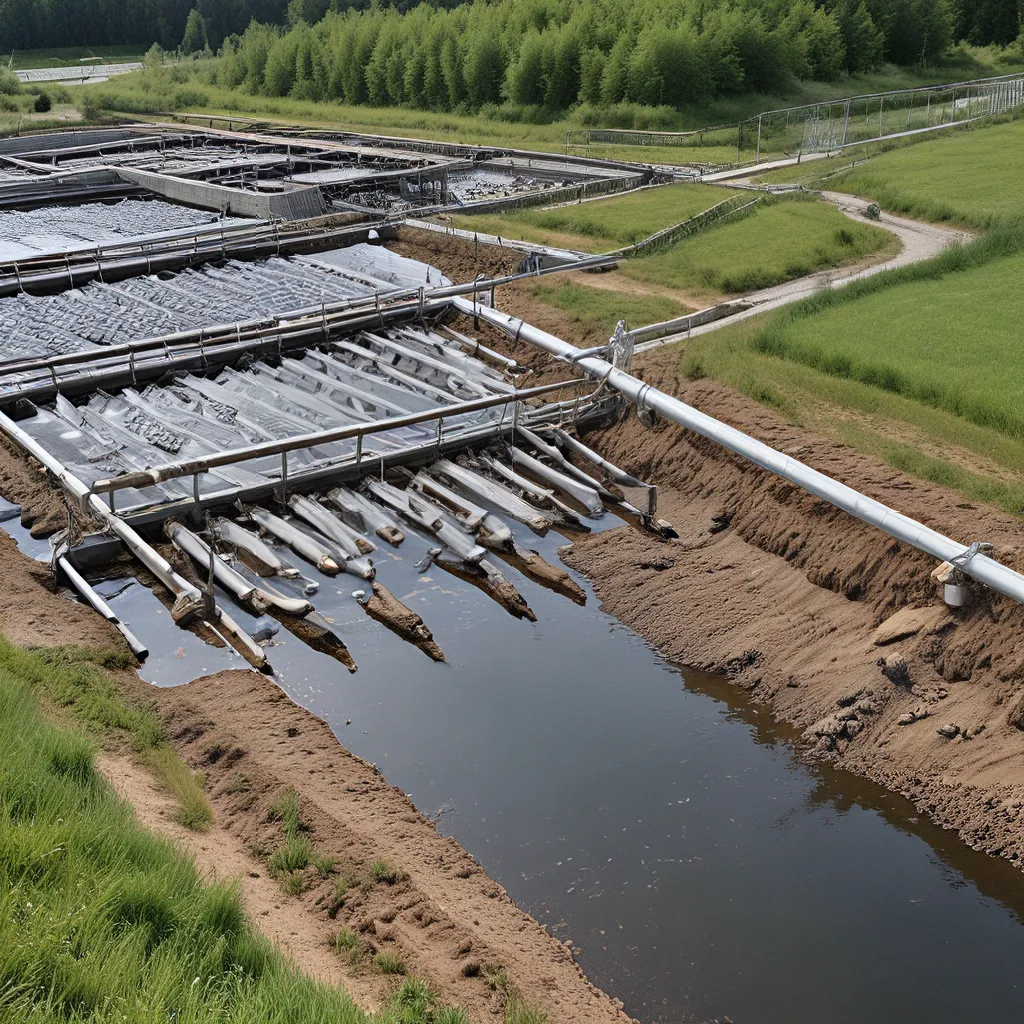
In the fast-paced world we live in, it’s easy to take for granted the essential services that keep our communities running smoothly. One such vital service is wastewater treatment – the unsung hero that transforms our used water into a valuable resource. But did you know that this unassuming process holds the key to unlocking a sustainable future?
As we grapple with the rapid urbanization and the ever-increasing demand for natural resources, the need for innovative wastewater management has never been more pressing. Enter the concept of the bioeconomy – a revolutionary approach that sees wastewater as a treasure trove of untapped potential, rather than just a waste product.
Uncovering the Hidden Gems in Wastewater
Wastewater, you see, is far more than just dirty water. It’s a veritable goldmine of organic materials, nutrients, metals, and chemicals – all of which have significant economic value. By harnessing the power of advanced biotechnological processes, we can transform this ‘waste’ into a cornucopia of valuable resources.
Imagine a world where we could recover energy in the form of biogas, biohydrogen, and even electricity from our wastewater. Or what if we could extract single-cell proteins and biopolymers – the building blocks of sustainable materials? The possibilities are truly mind-boggling.
The Circular Economy of Wastewater
At the heart of this bioeconomy revolution is the concept of the circular economy. Instead of the traditional linear “take-make-waste” model, the circular economy advocates for a closed-loop system where resources are continually reused and recycled.
Wastewater treatment plays a pivotal role in this circular economy, as it enables us to recover and reuse the valuable resources hidden within. By integrating cutting-edge technologies like algal treatment, anammox, and microbial fuel cells, we can extract, concentrate, and transform these resources into a wide array of value-added products.
But the benefits of this circular approach extend far beyond just resource recovery. By valorizing our wastewater, we can also reduce our environmental impact, conserve natural resources, and even contribute to the achievement of the United Nations’ Sustainable Development Goals (SDGs). It’s a win-win-win scenario that’s too good to ignore.
Reinventing Wastewater Treatment
Of course, realizing the full potential of the wastewater bioeconomy requires a paradigm shift in how we approach wastewater treatment. Conventional technologies, while effective at removing contaminants, have largely focused on the linear “treat-and-dispose” model. But now, we must rethink and reimagine these processes to prioritize resource recovery and value creation.
Advanced treatment technologies like algal cultivation, anammox, and microbial fuel cells offer promising solutions. By leveraging the power of nature’s own processes, we can concentrate and transform the valuable components of wastewater into a diverse array of products, from biofuels to bioplastics and beyond.
But the real magic happens when we integrate these technologies into a holistic, circular system. By coupling filtration and anaerobic digestion through the Partitions-release-recover (PRR) approach, we can maximize the recovery of resources and minimize waste. It’s a game-changing strategy that’s poised to revolutionize the way we think about wastewater management.
The Future of Wastewater: A Sustainable Bounty
As we continue to explore the vast potential of the wastewater bioeconomy, the future looks brighter than ever. Ongoing research is uncovering new and innovative ways to extract value from this seemingly mundane resource, from recovering precious metals to producing high-value biochemicals.
Experts suggest that the application of these biotechnological processes can not only transform wastewater treatment but also contribute to the development of a more sustainable circular economy. By valorizing our waste resources, we can reduce our reliance on finite natural resources, mitigate environmental degradation, and create new economic opportunities in the process.
Of course, the road to a wastewater-fueled bioeconomy is not without its challenges. Complex regulatory frameworks, technological barriers, and cultural shifts will all need to be navigated. But with the right vision, the right partnerships, and the right tools, I’m confident that we can overcome these hurdles and unlock the full potential of this untapped resource.
So, the next time you flush the toilet or turn on the tap, take a moment to appreciate the unsung heroes of wastewater treatment. Because in their hands, our used water isn’t just waste – it’s a treasure trove of possibilities, waiting to be discovered and transformed into a sustainable bounty for generations to come.